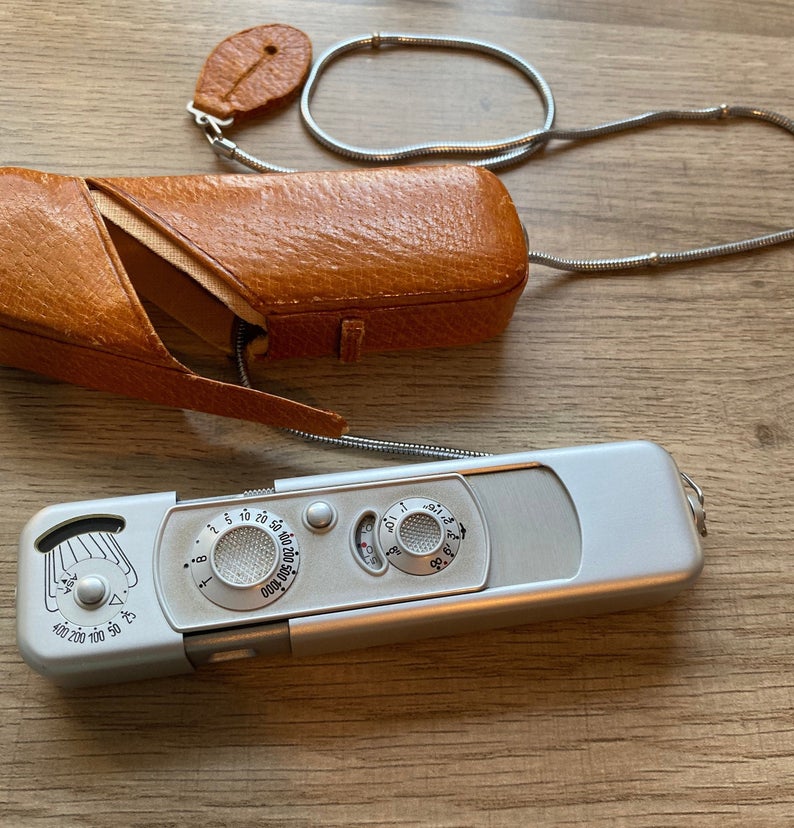Spy special.
Spying is not what it used to be. Today’s Russkie steals data after hacking your cloud server or uses his cell phone. The images are perfect, sent by encrypted cellular mail and infinitely enlargeable.
Ponder then the pre-war and cold war spy’s challenges. He had to make images of those stolen military secrets in poor lighting, had a limited number of snaps on a roll and the chances are that his exposures were off, his shutter speeds too slow and the result a grainy mess. Then along came the Minox camera in 1936 and his life was made considerably easier. For the first time a truly pocketable, high quality camera could make half decent images and the minuscule 50 shot film cartridge was not that hard to secrete away. The original Minox measured just 3.1″ x 1.1″ x 0.6″, and weighed but 4.6 ozs. The cartridge was smaller still. The 8 x 11mm negative, just 10% the area of a 35mm film original, was useable in the right hands.

Small and stealthy. Shown extended and ready for action.
Appropriately enough the first Minoxes were made in Latvia, one of the three Baltic states sharing a border with Comrade Ivan and forever looking over its shoulder at the gathering Russkie hordes on its border, waiting to invade. They used AK47s, not Minoxes, to do their thing. So production was moved to – where else? – Germany after the war, and the Russkie spies were no longer home grown but came from Cambridge (Burgess, McLean, Philby, Blunt) or Los Alamos (Klaus Fuchs). But nationality notwithstanding, the Minox soldiered err, spied, on.
The Model B shown above included a selenium exposure meter and the neat metal lanyard provided just the right distance measure for a sheet of A4 with nuclear trigger drawings. A complete subsystem grew up around the camera including an enlarger and projector (to better enjoy your holiday snaps from Chernobyl) and there was even a binocular attachment for when you needed a real close up of Comrade Stalin’s murderous mustache.
Once the Cold War faded the Minox faded with it, later attempts at compact 35mm cameras a flop. At one point Leica bought the maker, proving that German financial acumen was not bred at Harvard Business School. But it was the spy camera of choice for some 50 years and is quite beautiful to operate and behold.